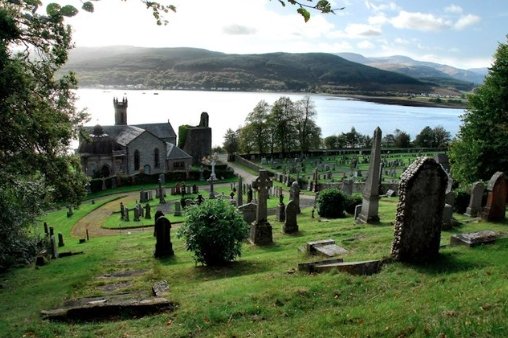The mysterious disappearance and discovery of a 16th Century gravestone
A 16th Century gravestone that once marked the grave of a Scottish clan chief was stolen from a remote island churchyard and found in a London flat five years later. The stone, which some believe carries a curse, was discovered by the parents of the late Lawrence Mabon, who had died at the age of 33.
The ancient grave of John of Moidart, chief of Clanranald
The stone belonged to John of Moidart, who was the chief of Clanranald in the 16th Century. He was a legendary figure who secured his leadership at the Battle of the Shirts, a bloody clan conflict that took place near Loch Lochy in 1544. He died in 1584 and was buried at Howmore, the most ancient church site in South Uist.

The carvings on the stone and their meanings
The stone is a rare example of medieval art and culture. It has carvings that depict the galley of the Lords of the Isles, Castle Tioram, a hand holding a cross-crosslet, a rampant lion and a raven. These symbols represent the clan’s history, power and identity. The stone is also inscribed with John of Moidart’s name and title in Latin.
The theft of the stone and its investigation
The stone was stolen from Howmore in 1990, sparking a national appeal for its recovery. The islanders and the then Ancient Monuments Department launched an investigation into its disappearance, but no clues were found. The stone weighed 160kg and was believed to have been taken by boat or helicopter.
The discovery of the stone and its return to South Uist
The stone was found in 1995 in a flat in Euston, London, by the parents of Lawrence Mabon, who had died of misadventure. They also found photographs of him and another man removing the stone from Howmore. The other man has never been identified and the motive behind the theft remains unknown. The parents contacted the British Museum, which then notified National Museums Scotland. The stone was returned undamaged to South Uist, where it is now displayed at Kildonan Museum.
The legend of the curse and its possible effects
According to local folklore, anyone who desecrated the ancient grave of John of Moidart would be doomed to meet an early death. Many believe that the curse was responsible for Lawrence Mabon’s fate and that it still lingers on the stone. Some also claim that the stone has supernatural powers and can affect the weather and the crops.


















